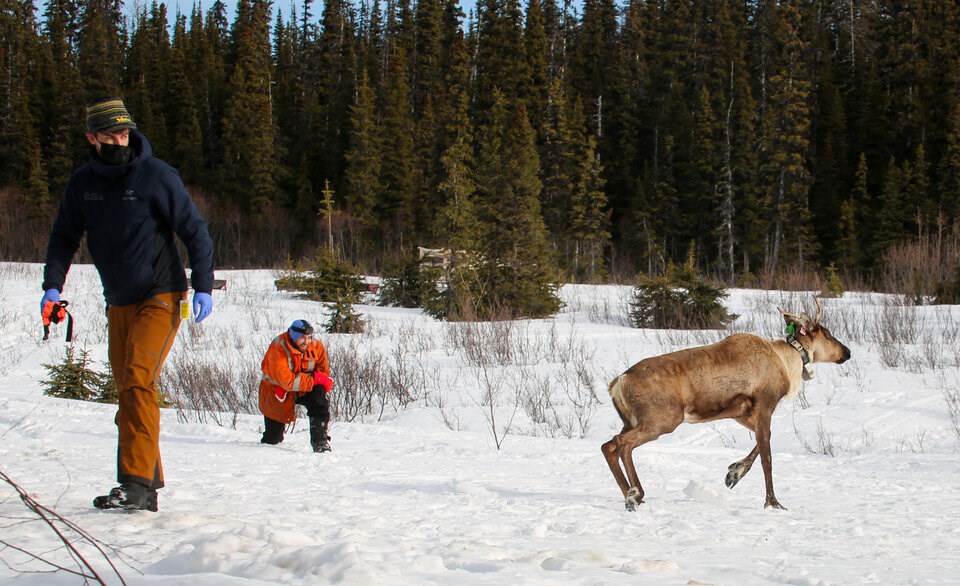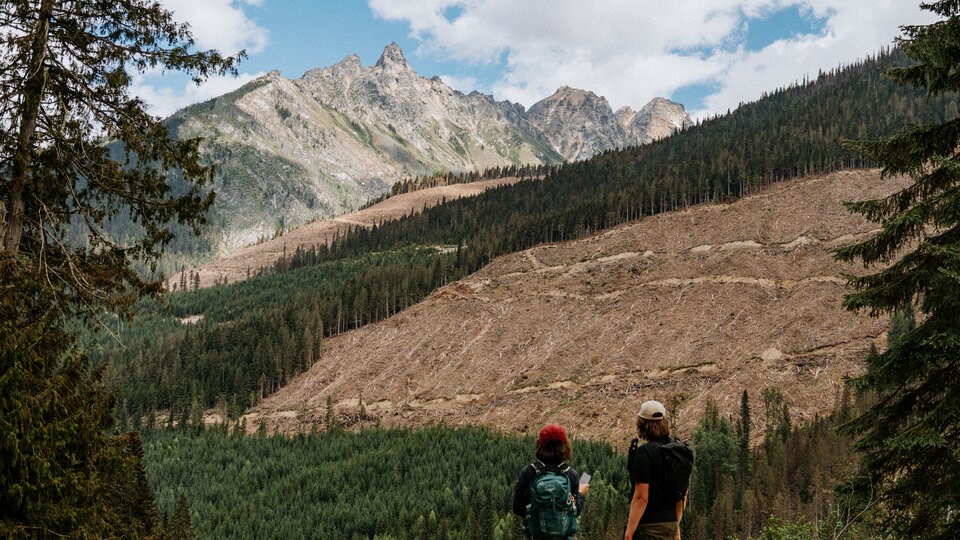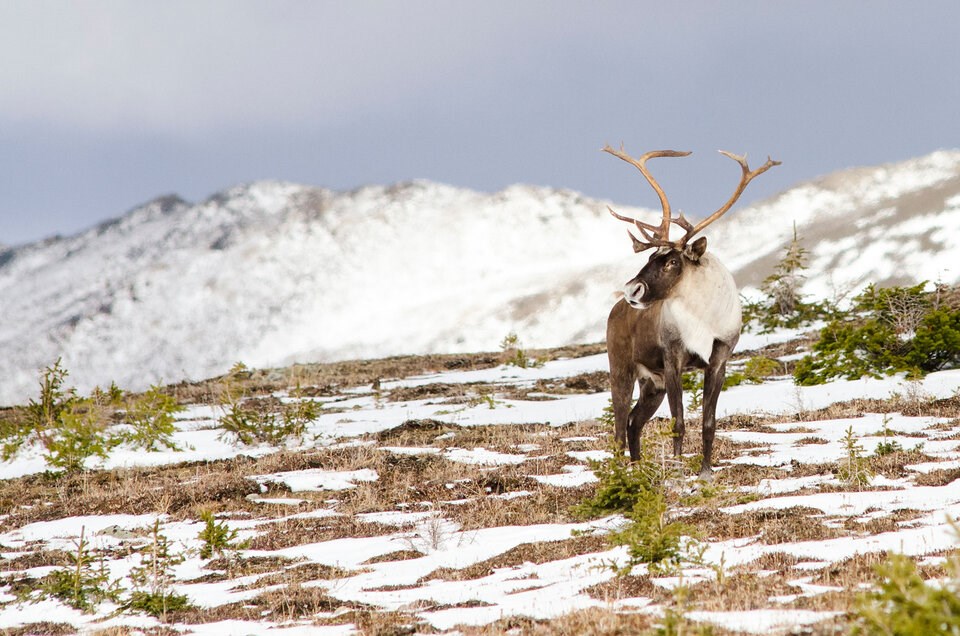Global warming is predicted to drive one of the greatest declines in caribou populations in the last 21,000 years, with British Columbia's herds expected to see declines of up to 61 per cent by 2100 if high rates of warming go unchecked, a new study says.
Caribou — also known as reindeer in Europe and Asia — have survived several spells of Arctic warming in the past. Their presence across the planet’s tundra, forests and mountains have long supported Indigenous populations while acting as ecosystem engineers, disturbing the soil and trampling vegetation in a way that promotes new plant growth.
A natural fertilizer, their droppings return essential nutrients like nitrogen to the soil and help to redistribute them across boreal forests and tundra landscapes. In mountainous areas, caribou feed on forest lichen, helping to regulate vegetation while acting as a food source for wolves, grizzly bears and wolverines.
Human disturbance of those landscapes — from logging to road building — has already led to a two-thirds decline in the global population over the past 30 years.
New research, published in the journal Science Advances last week, has now found global warming could push caribou populations even closer to extinction.
A group of Australian, U.S. and Danish researchers analyzed fossils and ancient DNA to reconstruct the dynamics of caribou populations over the past 21,000 years. They then built models to see how they would survive as habitats are further changed by human activity and rising global temperatures.
Elisabetta Canteri, a researcher from the University of Adelaide and the University of Copenhagen who led the study, found that by 2100, wild caribou populations in North America are predicted to suffer the largest declines.
“In general, North America seems to be the region where we expect greater losses of climatically suitable areas for the species,” Canteri told BIV in an email.

The results show North American populations will see average declines of 84 per cent, with the caribou’s geographic range contracting 71 per cent under a high-emission climate change scenario. Under a more optimistic warming scenario, Canteri said the models showed North American caribou could have their populations reduced by 42 per cent.
British Columbia’s caribou herds are expected to see declines of 61 per cent if high rates of warming go unchecked. Under an average warming scenario, the province’s caribou population could still fall by a third even as their range expands.
“This can happen when new areas become climatically suitable but not suitable enough to sustain larger population sizes,” said Canteri. “So, populations decrease but they spread out to larger areas.”
The latest global study did not consider other processes that can further impact populations, like diseases, daily extreme weather variations and hunting.
The models did not differentiate between different caribou ecotypes. It’s possible, Canteri said, that woodland, tundra and mountain caribou could adopt different behaviours in the face of climate change, and that could change their ability to survive in a warming world.
Early signs of caribou habitat protection lacks 'political will'
The research comes less than two months after a satellite analysis identified 5,713 hectares of B.C. forests have been slated for logging across the ranges of three of the province’s most at-risk herds: Columbia North, Groundhog and Wells Gray South. That’s an area equivalent to about 14 Stanley Parks.
At the time, a statement from the Ministry of Forests said it was “unable to comment” on the results “as we don’t know how it was determined.”
In B.C., 41 per cent of caribou habitat is already considered disturbed from activities like clear-cut logging, mining, hydro power projects and resource roads.
Rachel Plotkin, the boreal project manager for the David Suzuki Foundation, said she is not surprised that future modelling shows such heavy losses of the indicator species — one whose status mirrors the overall ecological health of their environment.
“The frustrating thing is there can be logging that happens that ensures that wildlife habitat is maintained or restored,” she said. “We just haven’t seen the political will.”

There are some signs that government agencies are ready to act, including BC Timber Sales, a B.C. government-run corporation responsible for administering a fifth of the province’s annual logging quota.
In May 2025, BCTS said it was halting “new investments” in unprotected core caribou habitat of the Columbia North herd — part of a collaboration with First Nations, industry, as well as local and federal governments, the Ministry of Forests added.
The goal, according to the ministry, is to refine its knowledge, align priorities that support caribou with other objectives like mitigating wildfire risk, and responsibly secure timber supply to support the economy.
The ministry failed to answer several questions, including how much forest the logging pause will impact, how long it will last, and how it foresees the pause will impact caribou and the forestry industry. The province later said it has no plans to roll out logging pauses in other parts of B.C.
'Not jobs versus the environment'
Canteri said her group's findings highlight a need to boost investments in the management and conservation of caribou, particularly in North America, where projected losses are highest.
The global caribou modelling is one more reason why B.C. should safeguard intact habitat so herds can cope with what’s coming, added Eddie Petryshen, a conservation specialist at the Kootenay-based conservation group Wildsight.
“That study really underscores the urgency of caribou conservation, particularly in southern and central B.C. where we’ve already seen local extinctions,” he said. “Caribou are kind of a barometer for these ecosystems.”
Plotkin cautioned not to interpret the projected losses as inevitable.
“We have the knowledge and creativity to change our practices. We just need to recognize that it’s not jobs versus the environment,” she added.
“Environment underpins all of our economies.”



